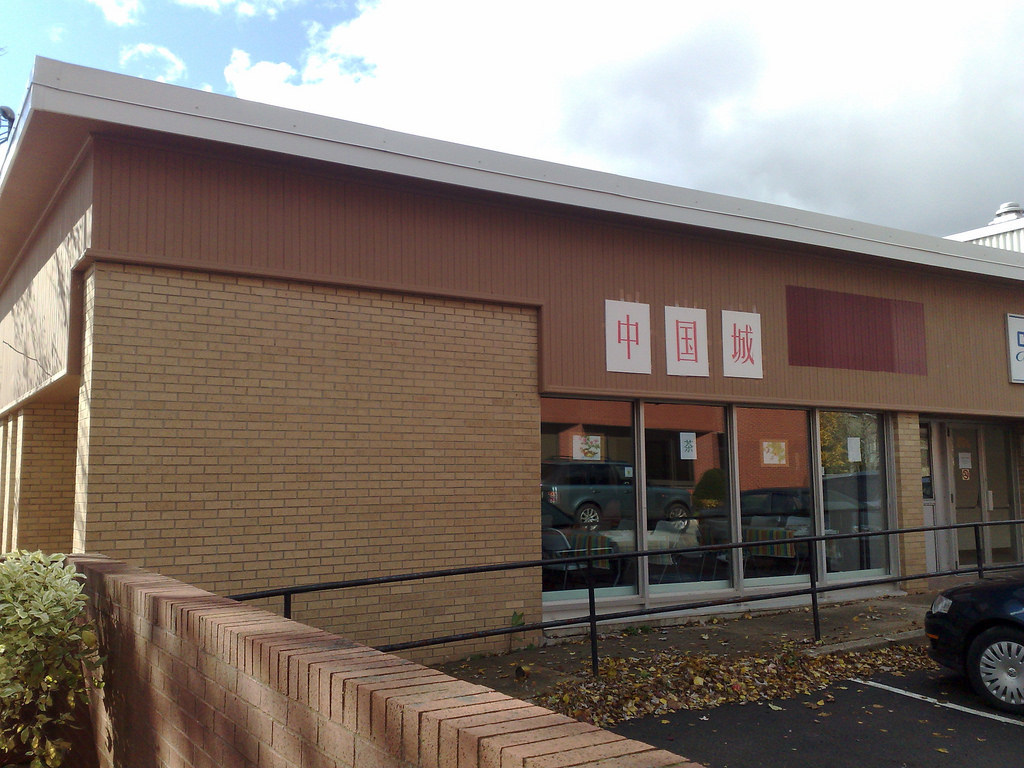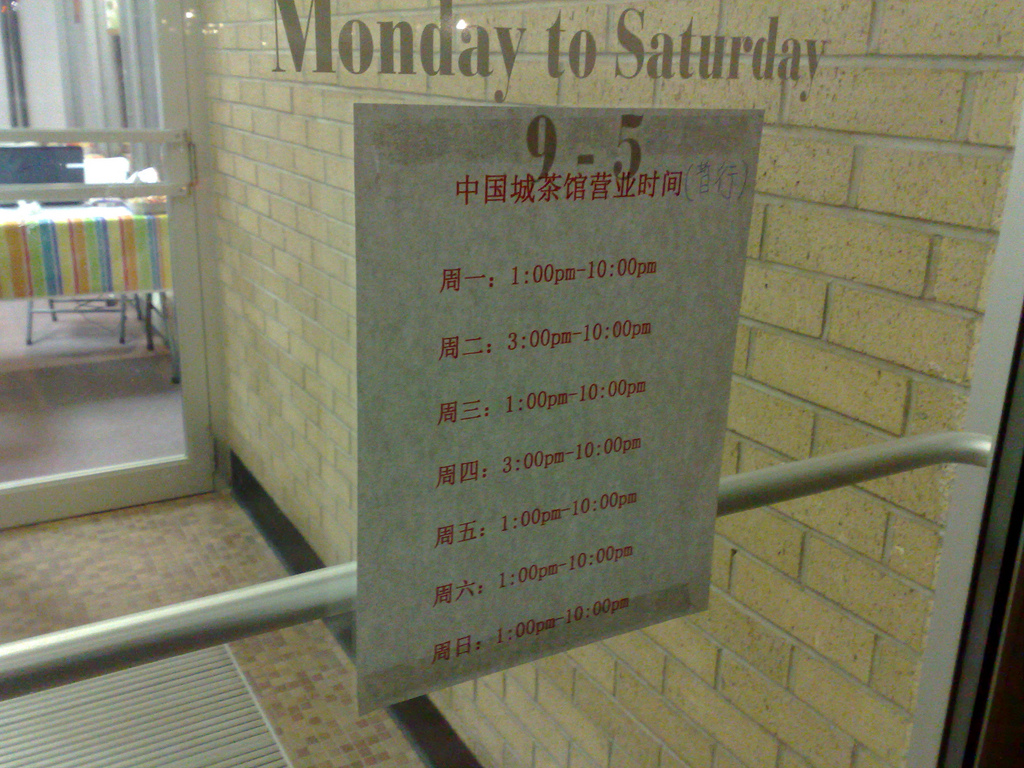There’s an increasing opportunity for the curious among us to learn about the Chinese language as the number of newcomers to Charlottetown from Taiwan and China increases every day.
I’m used to learning new programming languages, and programming languages tend to be logical and to follow similar rules; today’s Chinese, like today’s English, is the process of hundreds of years of evolution, so isn’t necessarily logical at all.
So Chinese writing is like a big complicated puzzle to me; but, with help from my Chinese-writing friends, I’m gradually beginning to parse it apart. Take this sign, for example:

The sign is on the side of the new downtown social club and I had no idea what it meant. I tried writing the characters into my iPod touch, but to no avail; no matter how carefully I drew out the characters, I could never get the iPod to match what I saw on the sign.
What I really wanted was a “take a photo of Chinese characters, upload it, and get back English” service, like Google Goggles for Chinese (it doesn’t support Chinese yet itself), but none of those I tried worked.
Finally, I fell back to where I should have started: I asked my friend Winnie at Tai Chi Gardens and she told me, quickly and with a smile, that it means “China Town.”
And, according to Google Translate, she’s exactly right.
(Interestingly enough, when I handed my iPod Touch to Winnie and let her write in the Chinese for the first character, it recognized what she wrote on the first go even though, to both her eyes and mine, we created almost exactly the same shapes).
The sign on the door with hours was a little easier to parse apart:

For this sign the Days of the Week in Chinese page was a big help, specifically:
The modern Chinese names for the days of the week are based on a simple numerical sequence. The word for ‘week’ is followed by a number indicating the day: ‘Monday’ is literally ‘week one’, ‘Tuesday’ is ‘week two’, etc.
And of course one can assume that Tuesday follows Monday, and so on, so it wasn’t too difficult to figure out that:
- 週日 is Sunday
- 週一 is Monday
- 週二 is Tuesday
- 週三 is Wednesday
- 週四 is Thursday
- 週五 is Friday
- 週六 is Saturday
Some other things I’ve learned:
- People from Taiwan write using “Traditional Chinese” characters and people from China write using “Simplified Chinese” characters; in general one can understand the other, but not always. For example, 中国城 is the Simplified Chinese for “China Town” while 中國城 is the “Traditional Chinese.”
- Historically Chinese signage would be read right-to-left, but contemporary signs are generally read left-to-right. Which is why the sign read “China Town” and not “Town China.”
- If you’re Taiwanese and using a computer, you can either use a touchpad-like device to write character as they are, or use something called Bopomofo; watch this video to understand more on this from a 5 year old or this video to see how to use this yourself with Windows.
- The peichinese.com website is the place to hang out if you’re interesting in learning more about the Chinese-speaking community in Prince Edward Island in Chinese.
Still so much more to learn!
 I am
I am
Comments
Check out Alex’s racing shirt
Check out Alex’s racing shirt: http://therunman.blogspot.com/2009/06/alexs-new-race-shirt-sneak-peek.html (full shirt next to Kara Grant’s bilingual shirt here )
Just yesterday I was trying
Just yesterday I was trying to read some Chinese with Google Goggles just yesterday. Rather let down it didn’t work.
Btw, I’m happy your word verification still uses characters I’m used to.
Pleco is releasing a
Pleco is releasing a character recognition module to their popular dictionary and flashcard app. You can see a demo of the app. here: http://www.youtube.com/watch?v…
It could be very useful in some instances.
That is very cool, and almost
That is very cool, and almost exactly the app I have in my head when I think “why isn’t there an app for this” when confronted with Chinese. Thanks for the pointer.
Add new comment